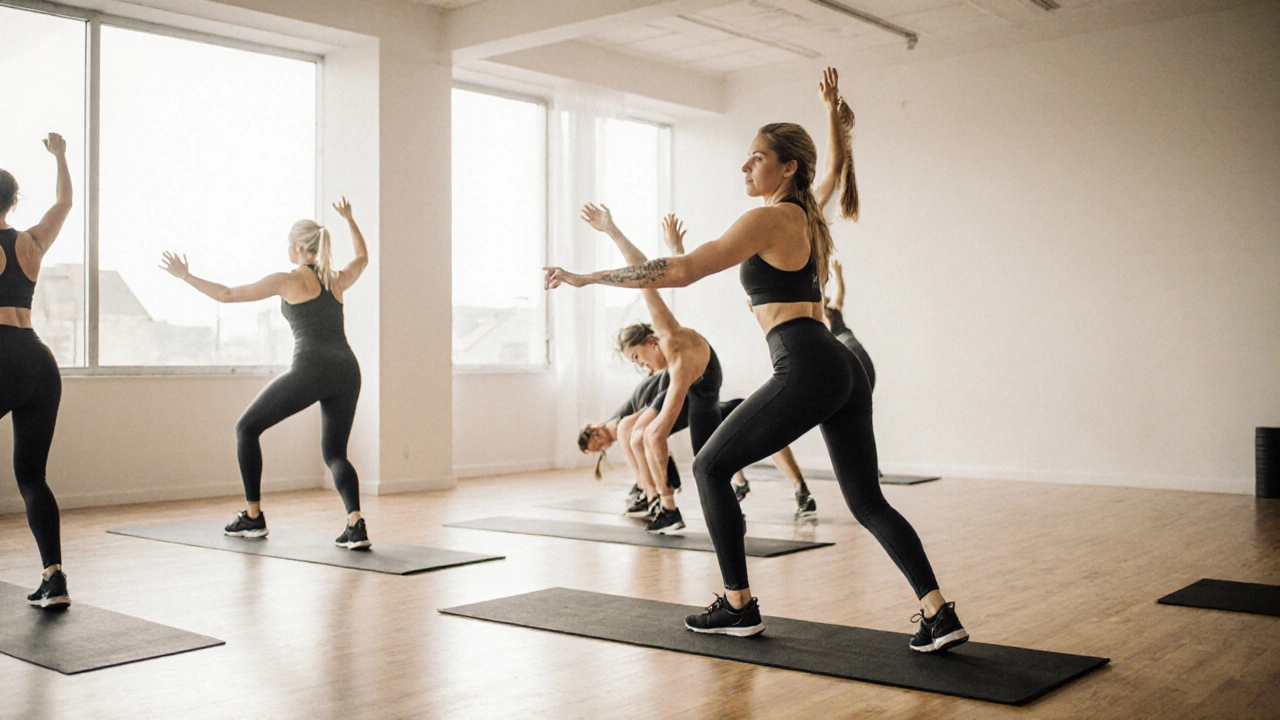When you think of Pilates, a low-impact movement system focused on core strength, posture, and controlled breathing. Also known as core conditioning, it’s often seen as a gentle way to build stability and improve alignment. But if your goal is to get your heart pumping, you might wonder: Is Pilates good for cardio? The short answer? Not really — but it’s not useless either. Pilates doesn’t raise your heart rate like running, cycling, or HIIT does. Still, it plays a quiet but important role in supporting cardiovascular health — especially if you’re rebuilding strength after injury, managing joint pain, or just starting out.
Let’s break it down. Cardiovascular exercise, any activity that keeps your heart rate elevated for sustained periods to improve heart and lung function needs to push your body into that aerobic zone — usually 60–80% of your max heart rate. Most traditional Pilates classes, especially mat-based ones, stay below that threshold. You’re moving slowly, focusing on precision, and breathing deeply — not gasping for air. That’s why it’s not classified as cardio. But here’s the twist: HIIT, a training method that alternates short bursts of intense effort with recovery periods, can be blended into Pilates. Some modern studios now offer “Pilates cardio” classes that speed up the pace, add jumps or pulses, and use equipment like resistance bands or reformers to keep your heart rate up. These hybrids work. They’re not pure Pilates, but they’re effective if you want both strength and endurance.
What about the people who rely on Pilates because they can’t run or cycle? If you have knee issues, back pain, or are recovering from surgery, Pilates gives you a safe way to move daily without jarring your body. That movement matters. Even light, consistent activity helps circulation, lowers resting heart rate over time, and reduces inflammation — all of which support heart health. A 2021 study in the Journal of Bodywork and Movement Therapies found that regular Pilates practice improved blood pressure and arterial stiffness in middle-aged adults — key markers for long-term cardiovascular risk. So while Pilates won’t replace your weekly run, it’s a smart companion.
And let’s not forget the breathing. Pilates teaches you to breathe fully and rhythmically — inhaling through the nose, exhaling through the mouth, engaging your diaphragm. That kind of breath control reduces stress, lowers cortisol, and helps your body recover faster. Chronic stress is a silent killer when it comes to heart disease. So even if your heart isn’t racing during a Pilates session, your body is getting a quiet, powerful reset.
Bottom line: Pilates alone won’t check off your daily cardio box. But if you’re looking to build a sustainable, joint-friendly movement habit that supports heart health in the long run — it’s a solid piece of the puzzle. Pair it with a 20-minute brisk walk, a few rounds of bodyweight HIIT, or even dancing around your kitchen, and you’ve got a well-rounded routine that keeps your heart strong without burning you out.
Below, you’ll find real posts from people who’ve tried blending Pilates with other workouts, tracked their heart health over time, and figured out what actually moves the needle — no fluff, just what works.

Pilates isn't just stretching or yoga - it's a powerful blend of strength and controlled movement that can also raise your heart rate. Learn how it builds muscle, improves posture, and can count as cardio when done right.
READ